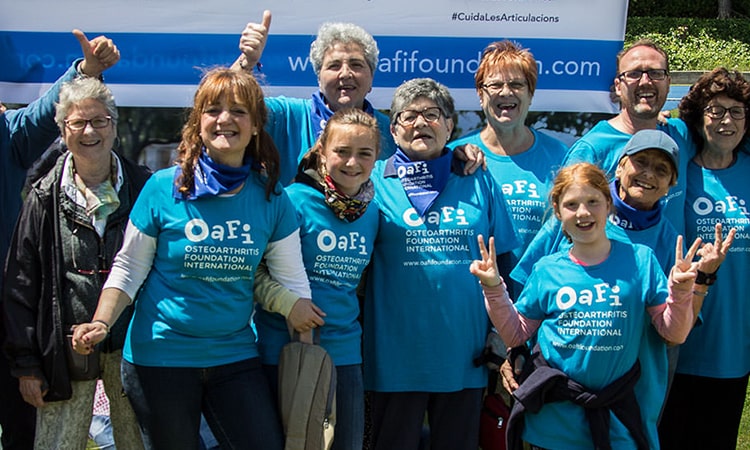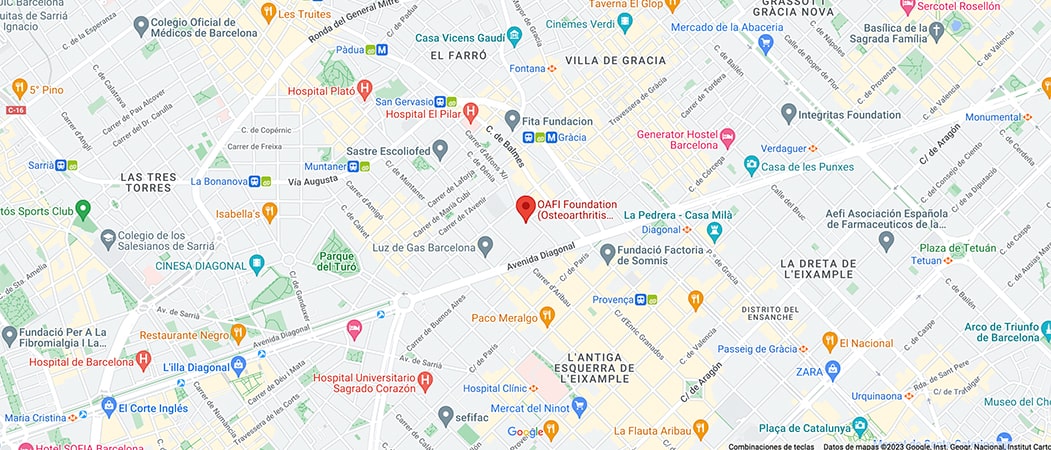- Foundation
- Actions
- Osteoarthritis
- Actuality
- OAFI Radio/TV
- Get Involved
- Contact
OAFI
Osteoarthritis International FoundationC/ Tuset, 19 · 3º 2ª
08006 Barcelona
(+34) 931 594 015
info@oafifoundation.comSchedule:
Monday-Thursday 9AM-6PM
Friday 8AM-3PM
-

-

-

The Benefits of Tai Chi for Osteoarthritis Patients

Practising Tai Chi not only improves discomfort in people affected by arthritis, osteoarthritis or any other pathology that causes joint pain, but it also helps prevent and delay its appearance in healthy people. Tai Chi is a combination of easy exercises to learn, and its practice is so enjoyable that many continue to practice it for years for the well-being and peace of mind it provides.
It is proven that physical exercise is very beneficial for health. In fact, it is an essential part of the therapeutic treatment of joint pain. Pain and stiffness in the joints often discourage people to exercise. However, without exercise, the joints become stiffer and more painful. Exercise keeps bones, muscles, and joints healthier.
It is important to keep the muscles as strong as possible, the stronger the muscles and the tissues around the joints, the better protected they will be. If you don’t do any type of exercise, the muscles weaken, and the bones can become osteoporotic. Tai Chi pumps the blood and fluids of the body through the muscles, tendons and joints, this facilitates the transformation and strengthening of these parts of the body.
The Journal of Rheumatology (September 2003), published a study on the Tai Chi program for arthritis demonstrating that this program was effective and safe. A study was conducted with a group of women with osteoarthritis who practiced Tai Chi for 12 weeks, comparing them with a group with similar characteristics who only received standard treatment. The group that practiced Tai Chi had 30% less pain, and 30% improved the ability to carry out their daily activities.
In April 2007, the largest study of Tai Chi for arthritis was published in the Arthritis Care and Research Journal, in which it was proven once again that Tai Chi is effective and safe for people affected by some type of joint discomfort. Experts agree that exercises should be aimed at improving flexibility, strengthening muscles and improving physical condition.
The practice of Tai Chi not only meets all these requirements, but also has many other advantages.
Flexibility
Tai Chi reduces stiffness and keeps your joints flexible. Stiffness causes pain. Increased flexibility will help relieve this pain. In Tai Chi, the joints, muscles and tendons of the entire body move smoothly, so its practice will significantly increase flexibility.
In 2008, a study was conducted at the University ofFlorida in which 46 patients suffering from rheumatoid arthritis were divided into two groups of 23 people. One group practiced Tai Chi and the other continued only with medical treatment. The group that practiced exercise showed greater joint mobility and less pain and stiffness after completing the program.
The Atlanta FICSIT group conducted a study with 200 participants (162 women and 38 men). The results indicated that the group that practiced this Tai Chi program, improved in flexibility, muscular and cardiovascular strength. It was also possible to verify 47.5% decrease in falls in the study participants.
Strengthening the muscles
Practicing Tai Chi normally helps maintain and increase the muscle strength. Stronger muscles protect joints and keep them more stable. This reduces the danger of fractures and reduces pain, as well as the strengthening of the musculature, it favours a higher quality of life by allowing greater mobility and self-confidence.
Many famous athletes suffer from osteoarthritis because of their trauma and injuries. Despite this, they are able to continue with their usual rhythm of life due to the strength of the musculature which protects their joints. Studies have shown that Tai Chi practice increases muscle strength by 15-20%.
Improved physical condition
Cardio-respiratory exercises help to strengthen the heart and lungs and obtain stamina, which is very important to maintain health. Arthritic joints and tissues need a supply of blood and oxygen to regain health. Better circulation of blood, fluids, and oxygen also helps keep the joints flexible and the muscles strong. Tai Chi is a particularly effective cardio-respiratory exercise.
In the Sydney Arthritis Association, a study was conducted in which 126 patients, who had suffered an acute myocardial infarction (heart attack), were divided into two groups, one practicing Tai Chi and the other without practicing it. The group that practiced Tai Chi obtained better cardiovascular circulation and lower blood pressure.
Postural correction
Body posture is very important. When the posture is correct, the joints and muscles are used correctly, the lungs have more space. Normally a bent body with slumped shoulders is associated with sadness, fear and negative emotions. The practice of Tai Chi favours a good body position, benefiting all the functions of the organism.
Other reasons that demonstrate the effectiveness of Tai Chi
Mind’s power
As it is known, a positive mind can help in the healing and maintenance of a healthy body. Tai Chi integrates mind and body; we use the conscious mind to direct the inner force, and this to direct each movement.
When practicing Tai Chi, we focus on movements and body coordination. The mental training provided by the practice improves mental clarity, relaxation and raises the mood.
A recent study on complementary and alternative treatments carried out by Stanford University doctors concludes that the mind-body techniques are very effective first as complementary techniques and in many cases as alternative techniques for continuation of the treatments.
It is clear that the immense power of the mind has not yet been fully appreciated. As one of the most powerful mind-body exercises, Tai Chi teaches the student to realize the internal energy at his disposal with which he can achieve great self-control and physical and mental strength.
This article was written by Montse Serlavós Terrats, TaiChi Instructor at Espai Shen.






















[…] la Fundación Internacional de Osteoporosis, “practicar tai chi No solo mejora las molestias en personas con artritis, osteoporosis o cualquier otra enfermedad que […]